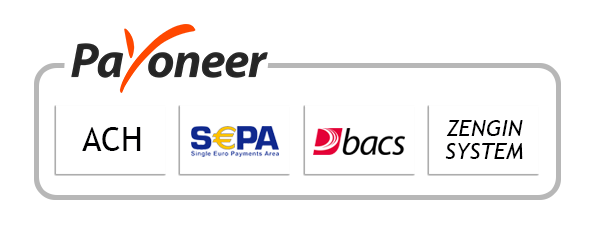
-
Report ID 136030 -
Published Date 17-Oct -
Delivery Format PDF/PPT/Word -
Editor's Rating
-
Report Details
The report on Mission Management Systems Market offers in-depth analysis on market trends, drivers, restraints, opportunities etc. Along with qualitative information, this report include the quantitative analysis of various segments in terms of market share, growth, opportunity analysis, market value, etc. for the forecast years. The global mission management systems market is segmented on the basis of type, application, and geography.
The global Mission Management Systems market was valued at US$ XX.X Mn in 2018 and is projected to increase significantly at a CAGR of x.x% from 2019 to 2028.
Mission Management Systems Market Scope:
By type, the market is segmented into Air Based, Naval Based, Land Based, and Unmanned Systems Based. By application, the market is divided into Defense, and Commercial.
Based on geography, market is analyzed across North America, Europe, Asia-Pacific, Latin America, and Middle East and Africa. Major players profiled in the report include Lockheed Martin, Northrop Grumman, Thales Group, Saab Group, Honeywell International, Curtiss-Wright, Quinetiq Group, Neya Systems, Piaggio Aero Industries, Aerocomputers, Bird Aerosystem, and Dharma Magna.Key Market Segments
TypeAir Based
Naval Based
Land Based
Unmanned Systems Based
Application
Defense
Commercial
Key Market Players included in the report:
Lockheed Martin
Northrop Grumman
Thales Group
Saab Group
Honeywell International
Curtiss-Wright
Quinetiq Group
Neya Systems
Piaggio Aero Industries
Aerocomputers
Bird Aerosystem
Dharma Magna
Reasons to Get this Report:
In an insight outlook, this research report has dedicated to several quantities of analysis industry research (global industry trends) and Mission Management Systems Market share analysis of high players, along with company profiles, and which collectively include about the fundamental opinions regarding the market landscape; emerging and high-growth sections of Mission Management Systems Market; high-growth regions; and market drivers, restraints, and also market chances.
The analysis covers Mission Management Systems Market and its advancements across different industry verticals as well as regions. It targets estimating the current market size and growth potential of the global Mission Management Systems Market across sections such as also application and representatives.
Additionally, the analysis also has a comprehensive review of the crucial players on the Mission Management Systems Market together side their company profiles, SWOT analysis, latest advancements, and business plans.The analysis objectives of the report are:
To equitably share in-depth info regarding the crucial elements impacting the increase of industry (growth capacity, chances, drivers, and industry-specific challenges and risks).
To know the Mission Management Systems Market by pinpointing its many subsegments.
To profile the important players and analyze their growth plans.
To endeavor the amount and value of Mission Management Systems sub-markets, depending on key regions (various vital states).
To analyze Mission Management Systems Market concerning growth trends, prospects, and also their participation in the entire sector.
To examine and study the Mission Management Systems Market size (volume & value) from the company, essential regions/countries, products, and application, background information from 2012 to 2018, and also prediction to 2028.
Primary worldwide Mission Management Systems Market manufacturing companies, to specify, clarify and analyze the product sales amount, value and market share, market rivalry landscape, SWOT analysis and development plans next coming years.
To examine competitive progress such as expansions, arrangements, new product launches, and acquisitions on the market. -
Table Of Content
1. Mission Management Systems Market Introduction
1.1. Definition
1.2. Taxonomy
1.3. Research Scope2. Executive Summary
2.1. Key Findings by Major Segments
2.2. Top strategies by Major Players3. Global Mission Management Systems Market Overview
3.1. Mission Management Systems Market Dynamics
3.1.1. Drivers
3.1.2. Opportunities
3.1.3. Restraints
3.1.4. Challenges3.2. PESTLE Analysis
3.3. Opportunity Map Analysis
3.4. PORTER’S Five Forces Analysis
3.5. Market Competition Scenario Analysis
3.6. Product Life Cycle Analysis
3.7. Opportunity Orbits
3.8. Manufacturer Intensity Map4. Global Mission Management Systems Market Value ((US$ Mn)), Share (%), and Growth Rate (%) Comparison by Type, 2012-2028
4.1. Global Mission Management Systems Market Analysis by Type: Introduction
4.2. Market Size and Forecast by Region
4.3. Air Based4.4. Naval Based
4.5. Land Based
4.6. Unmanned Systems Based
5. Global Mission Management Systems Market Value ((US$ Mn)), Share (%), and Growth Rate (%) Comparison by Application, 2012-2028
5.1. Global Mission Management Systems Market Analysis by Application: Introduction
5.2. Market Size and Forecast by Region
5.3. Defense5.4. Commercial
6. Global Mission Management Systems Market Value ((US$ Mn)), Share (%), and Growth Rate (%) Comparison by Region, 2012-2028
6.1. North America
6.1.1. North America Mission Management Systems Market: Regional Trend Analysis
6.1.1.1. US
6.1.1.2. Canada
6.1.1.3. Mexico6.2.1. Europe
6.2.1. Europe Mission Management Systems Market: Regional Trend Analysis
6.2.1.1. Germany
6.2.1.2. France
6.2.1.3. UK
6.2.1.4. Russia
6.2.1.5. Italy
6.2.1.6. Spain
6.2.1.7. Rest of Europe6.3. Asia-Pacific
6.3.1. Asia-Pacific Mission Management Systems Market: Regional Trend Analysis
6.3.1.1. China
6.3.1.2. Japan
6.3.1.3. Korea
6.3.1.4. India
6.3.1.5. Rest of Asia6.4. Latin America
6.4.1. Latin America Mission Management Systems Market: Regional Trend Analysis
6.4.1.1. Brazil
6.4.1.2. Argentina
6.4.1.3. Rest of Latin America6.5. Middle East and Africa
6.5.1. Middle East and Africa Mission Management Systems Market: Regional Trend Analysis
6.5.1.1. GCC
6.5.1.2. South Africa
6.5.1.3. Israel
6.5.1.4. Rest of MEA7. Global Mission Management Systems Market Competitive Landscape, Market Share Analysis, and Company Profiles
7.1. Market Share Analysis
7.2. Company Profiles
7.3. Lockheed Martin7.3.1. Company Overview
7.3.2. Financial Highlights
7.3.3. Product Portfolio
7.3.4. SWOT Analysis
7.3.5. Key Strategies and Developments7.4. Northrop Grumman
7.4.1. Company Overview
7.4.2. Financial Highlights
7.4.3. Product Portfolio
7.4.4. SWOT Analysis
7.4.5. Key Strategies and Developments7.5. Thales Group
7.5.1. Company Overview
7.5.2. Financial Highlights
7.5.3. Product Portfolio
7.5.4. SWOT Analysis
7.5.5. Key Strategies and Developments7.6. Saab Group
7.6.1. Company Overview
7.6.2. Financial Highlights
7.6.3. Product Portfolio
7.6.4. SWOT Analysis
7.6.5. Key Strategies and Developments7.7. Honeywell International
7.7.1. Company Overview
7.7.2. Financial Highlights
7.7.3. Product Portfolio
7.7.4. SWOT Analysis
7.7.5. Key Strategies and Developments7.8. Curtiss-Wright
7.8.1. Company Overview
7.8.2. Financial Highlights
7.8.3. Product Portfolio
7.8.4. SWOT Analysis
7.8.5. Key Strategies and Developments7.9. Quinetiq Group
7.9.1. Company Overview
7.9.2. Financial Highlights
7.9.3. Product Portfolio
7.9.4. SWOT Analysis
7.9.5. Key Strategies and Developments7.10. Neya Systems
7.10.1. Company Overview
7.10.2. Financial Highlights
7.10.3. Product Portfolio
7.10.4. SWOT Analysis
7.10.5. Key Strategies and Developments7.11. Piaggio Aero Industries
7.11.1. Company Overview
7.11.2. Financial Highlights
7.11.3. Product Portfolio
7.11.4. SWOT Analysis
7.11.5. Key Strategies and Developments7.12. Aerocomputers
7.12.1. Company Overview
7.12.2. Financial Highlights
7.12.3. Product Portfolio
7.12.4. SWOT Analysis
7.12.5. Key Strategies and Developments7.13. Bird Aerosystem
7.13.1. Company Overview
7.13.2. Financial Highlights
7.13.3. Product Portfolio
7.13.4. SWOT Analysis
7.13.5. Key Strategies and Developments7.14. Dharma Magna
7.14.1. Company Overview
7.14.2. Financial Highlights
7.14.3. Product Portfolio
7.14.4. SWOT Analysis
7.14.5. Key Strategies and Developments8. Assumptions and Acronyms
9. Research Methodology
10. Contact -
Inquiry Before Buying
Research Insights & Deliverables
 Development and Future Forecast
Development and Future Forecast Competitive benchmarking
Competitive benchmarking Company Revenue Statistics
Company Revenue Statistics Rising Regional Opportunities
Rising Regional Opportunities Technology Trends and Dynamics
Technology Trends and Dynamics Technology Assessment
Technology Assessment
-
Request Sample
Research Insights & Deliverables
 Development and Future Forecast
Development and Future Forecast Competitive benchmarking
Competitive benchmarking Company Revenue Statistics
Company Revenue Statistics Rising Regional Opportunities
Rising Regional Opportunities Technology Trends and Dynamics
Technology Trends and Dynamics Technology Assessment
Technology Assessment














